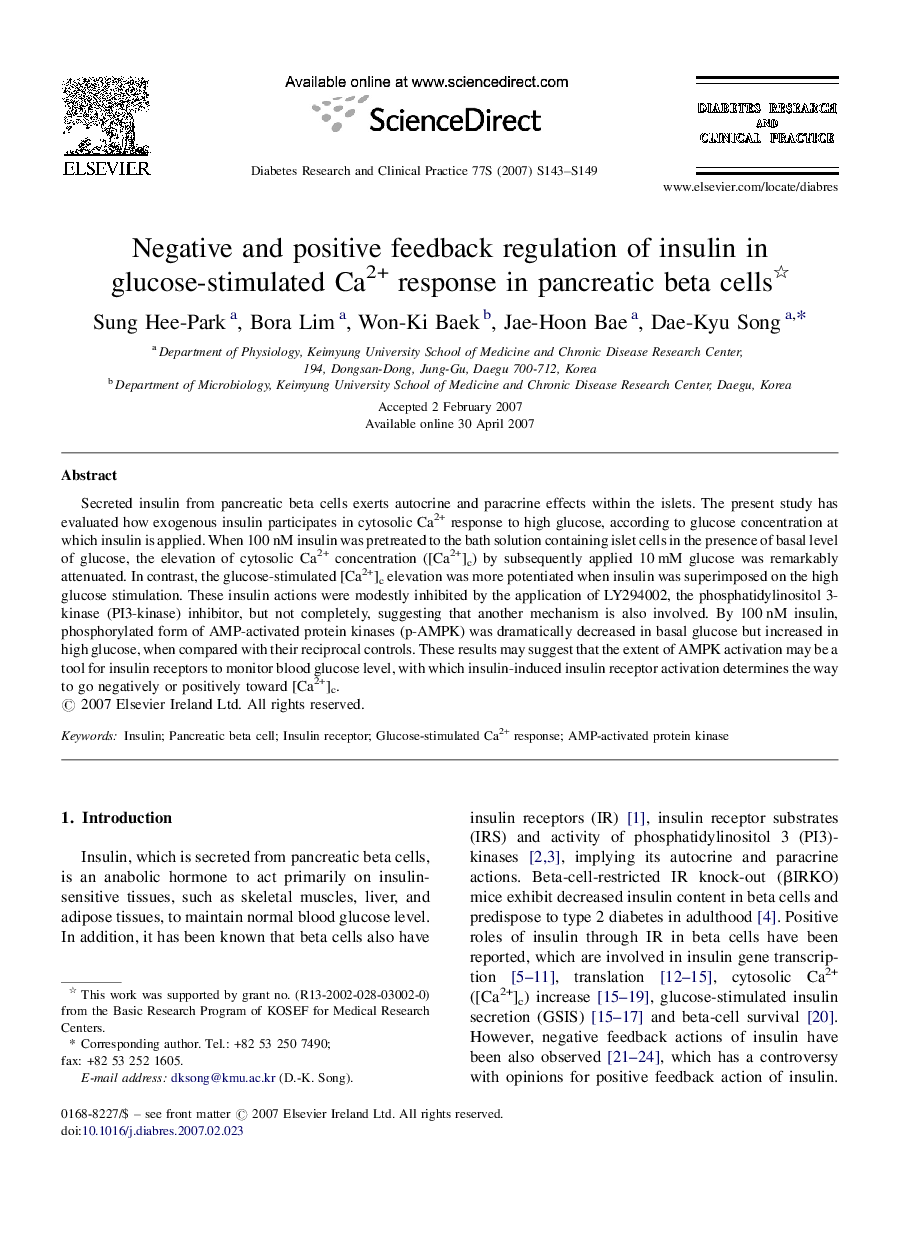| Article ID | Journal | Published Year | Pages | File Type |
|---|---|---|---|---|
| 2798646 | Diabetes Research and Clinical Practice | 2007 | 7 Pages |
Secreted insulin from pancreatic beta cells exerts autocrine and paracrine effects within the islets. The present study has evaluated how exogenous insulin participates in cytosolic Ca2+ response to high glucose, according to glucose concentration at which insulin is applied. When 100 nM insulin was pretreated to the bath solution containing islet cells in the presence of basal level of glucose, the elevation of cytosolic Ca2+ concentration ([Ca2+]c) by subsequently applied 10 mM glucose was remarkably attenuated. In contrast, the glucose-stimulated [Ca2+]c elevation was more potentiated when insulin was superimposed on the high glucose stimulation. These insulin actions were modestly inhibited by the application of LY294002, the phosphatidylinositol 3-kinase (PI3-kinase) inhibitor, but not completely, suggesting that another mechanism is also involved. By 100 nM insulin, phosphorylated form of AMP-activated protein kinases (p-AMPK) was dramatically decreased in basal glucose but increased in high glucose, when compared with their reciprocal controls. These results may suggest that the extent of AMPK activation may be a tool for insulin receptors to monitor blood glucose level, with which insulin-induced insulin receptor activation determines the way to go negatively or positively toward [Ca2+]c.
